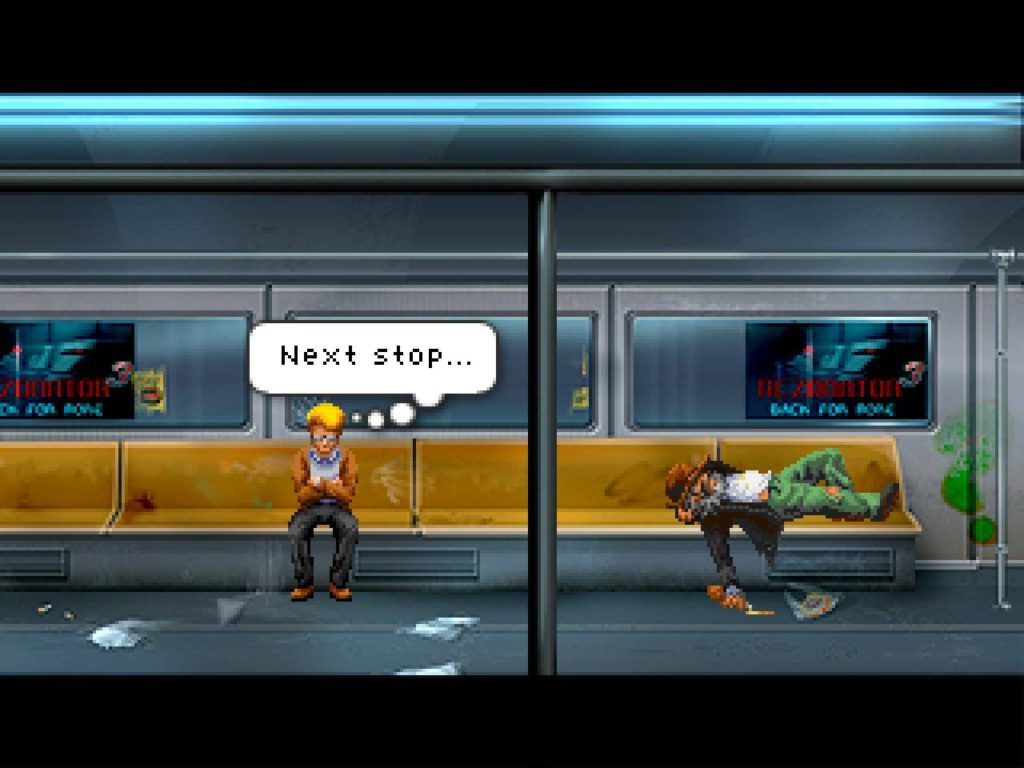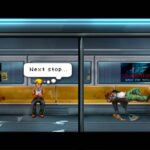Legend of Silence is a fictional video game in a short story that is compelling for the way it presents the character’s downward spiral. The video game character’s descent into enlightenment mirrors the father character’s descent into isolation. The reader wants to find out how the game ends as much as the father and his son, through which the story is told. That said, the game doesn’t actually seem fun. So, although it is interesting in the story, who would actually want to play it?

A fake screenshot for a nonexistent video game.
The story’s author discusses that in a post on his blog. He covers a lot of it.
http://uncannyvalleymag.blogspot.com/2011/06/screenshots-for-my-fictional-video-game.html
I wrote about this story before. Immediate thoughts for future reference.
Contrast immediately. Mention of Walmart. Decidedly modern. Considered what I may have submitted that was more “classic” or “universal” but c’est la vie and all that.
Are video games really as niche?
“In games, where it was so often so easy to lose perspective, but also in life.” This line was not necessary. This story could’ve been a parable. I’m going to be thinking about it the whole way through.
“The ill-gotten fruits of not being and not knowing.” Is this an attack on denial of responsibility? Is existence an acceptance of the responsibility to exist?
The Road is about a father and son. Its style is more barren. Prose to match the landscape. Their journey is one for survival. Literal life and death. This one’s father and son are also on a journey. Is it metaphysical? Is their journey towards completion of the game–towards not being–also about survival? The title is plural. They’re in it together. They’re mapping the world towards the goal of nonexistence.
Why is the character in the game a woman? Aping Metroid’s protagonist? How do things change when the lead is a female? How does this affect the perception of it?
The first moment of understanding is the loss of her wings. She is a bird girl and then she is weighed down by her choice to don the metal boots. Their choice, not hers. She can’t take them off. She loses her flight before she loses the added weight.
In Shadow of the Colossus, the player character goes on a journey of sacrifice. Double-edged sword: sacrifice the creatures, sacrifice your humanity. He becomes a monstrous doppelganger of himself. The gargoyle’s significance. Why must it look like Alicia but with horns and healthy wings? As she sacrifices, others gain strength? Laughing in her face? Aesthetic choices on the author’s part, probably. From a game design standpoint, you simply reuse what you have. One less in-game art asset to design from scratch.
Cheddar scabs are fucking great.
“where dollars and coins flew at Alicia from all sides and clung to her body, briefly rebuilding her wings in their own green image.” Money is only a temporary fix for permanent problems. Okay.
The dirt clod beneath the chamber of commerce. The dirt clod beneath the chamber of commerce. The dirt clod. The chamber of commerce. The dirt. The chamber of commerce. The dirt and the chamber of commerce. The chamber of commerce. Dirt and commerce. Dirt and money.
Kill the orchestra. Kill the music. Kill art. Silence.
This kid’s dialogue makes him seem older in places, younger in others. Wonder if that’s intentional.
Looking for a replacement for mother?
Perhaps the dialogue is indicative. Joshua’s getting older. He’s learning things.
You forget fear. You forget love.
To be, then, is to forget. To be is to not know you are.
Waiting.
In hindsight, the game character was a replacement for someone they’d both lost. The complete devotion to playing through the game isn’t about fun. There is no fun to be had in this sort of journey.



